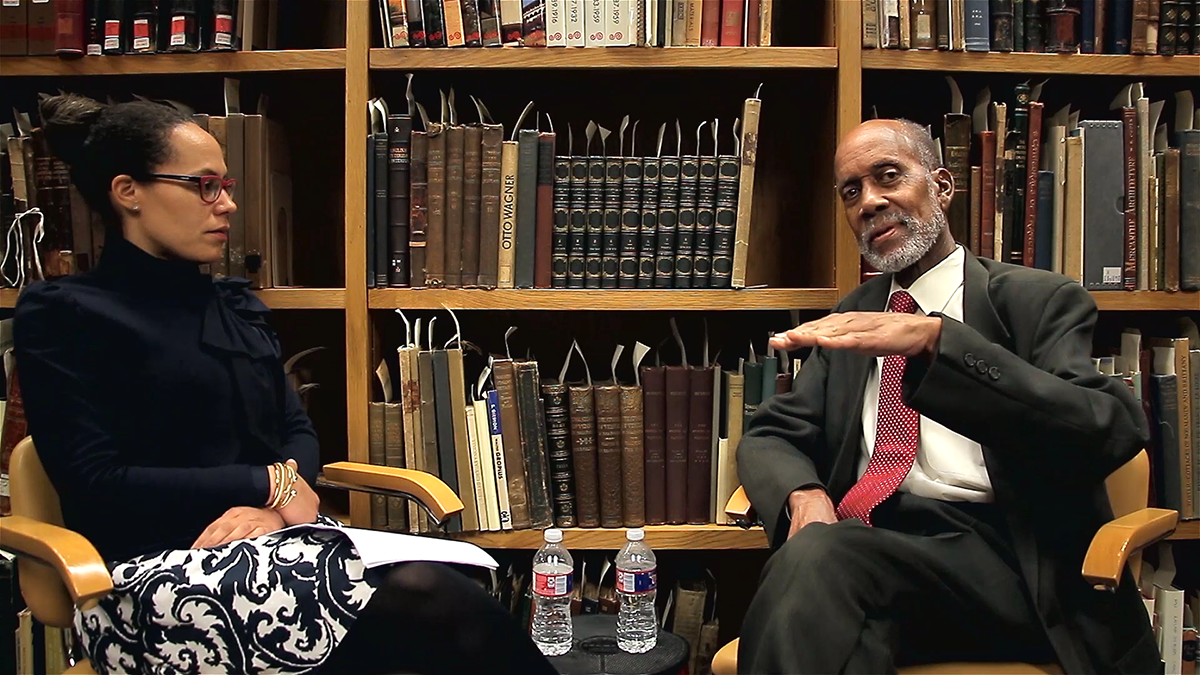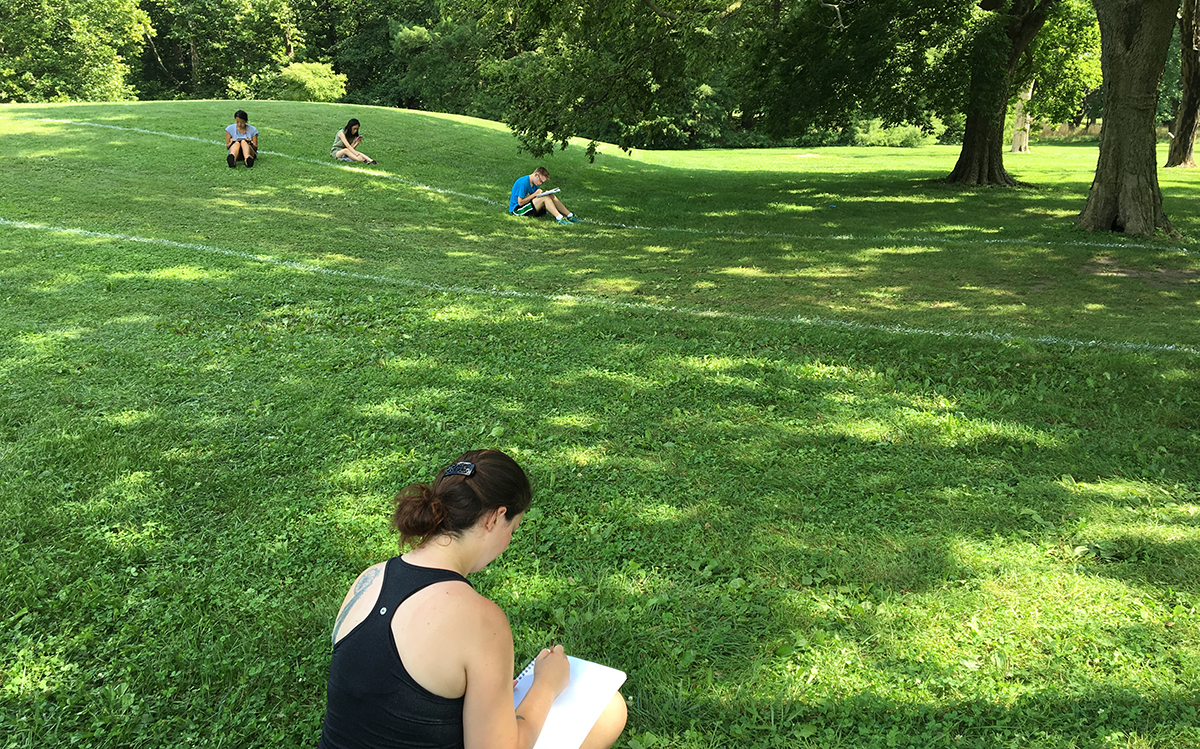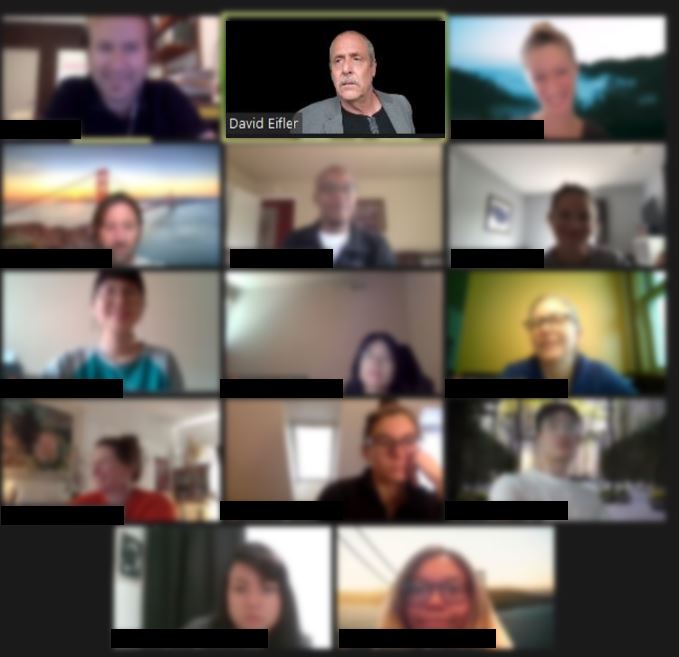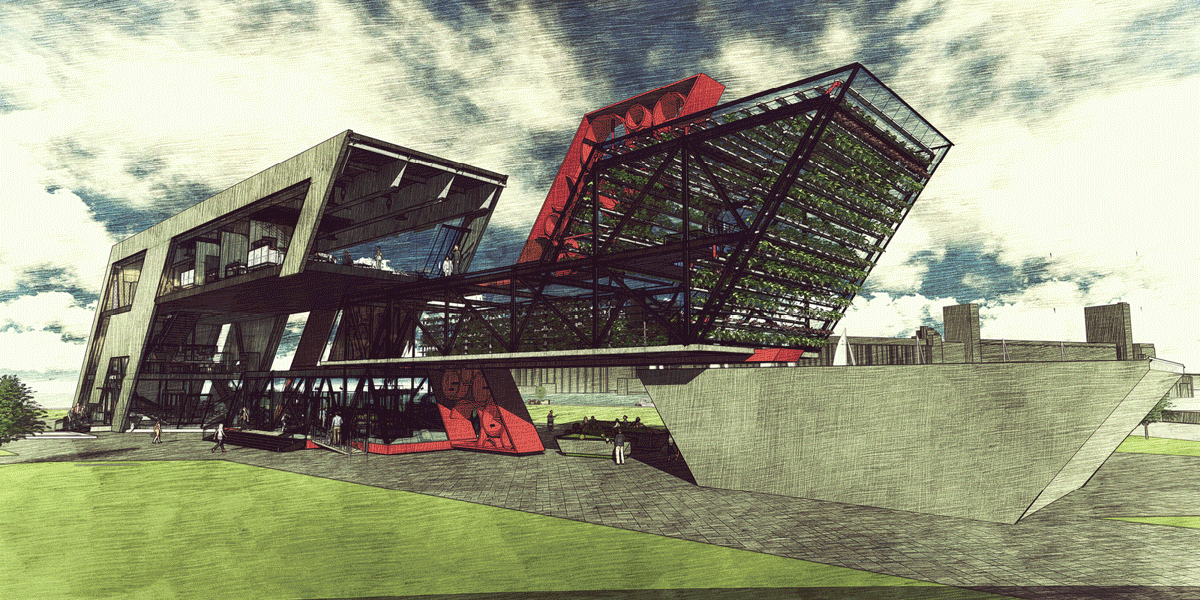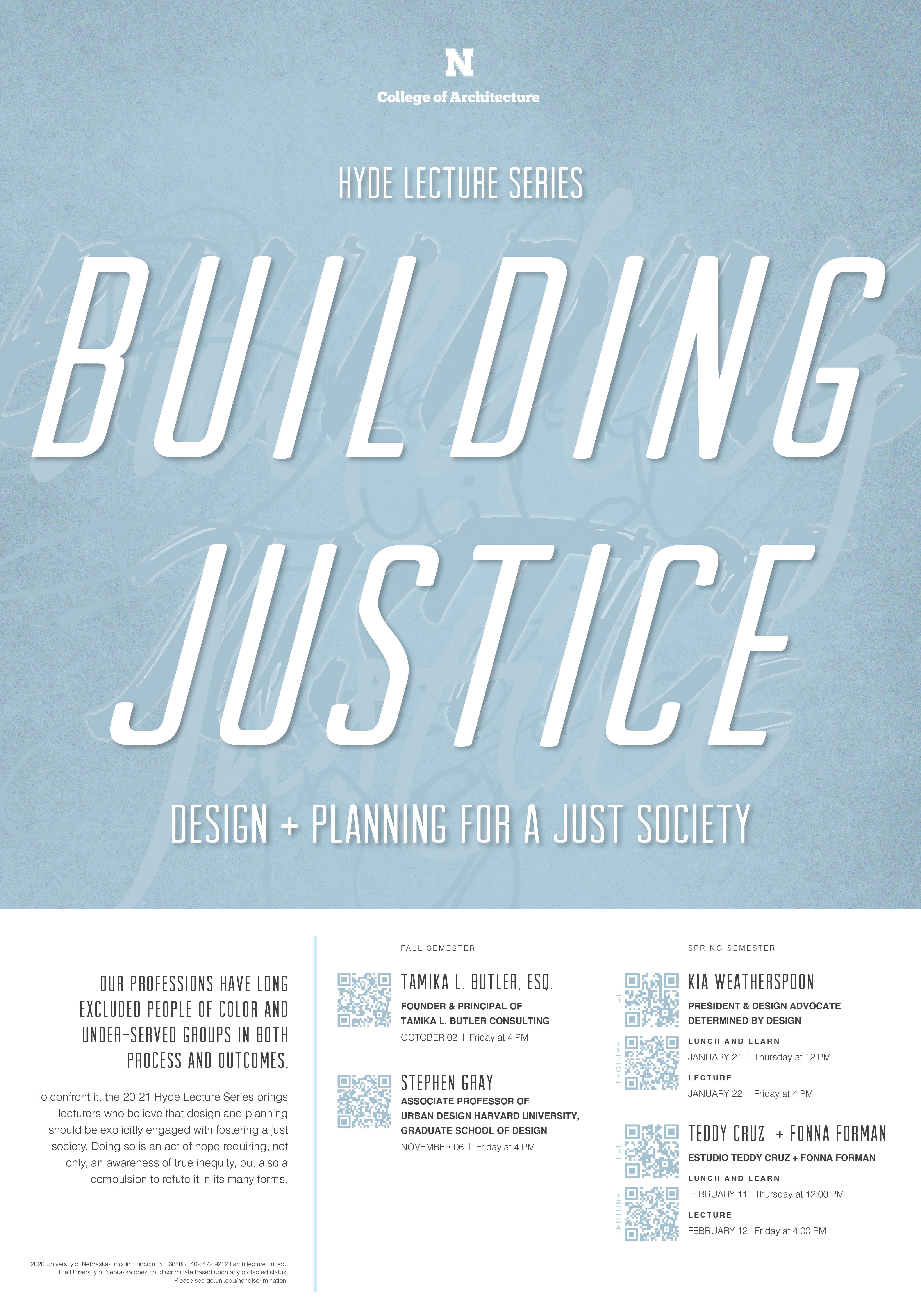University of Calgary
School of Architecture, Planning & Landscape Info Sessions and Competition
The School of Architecture, Planning and Landscape (SAPL) offers two post-professional degrees for practitioners seeking to build on their education. Information sessions are being offered in October for those interesting in finding out more. http://sapl.ucalgary.ca/future-students
SAPL has also launched an international competition – early bird registration rates are being offered until October 31. More details at https://www.cbdxcitiesforall.com/
Doctor of Design Info Session for any practicing design professional interested in a doctoral degree to build recognized expertise in a specific topic area
October 14, 2020 at 9:00am MST and October 28, 2020 at 9:00am MST
The climate crisis, rising social inequality, and the digital revolution of smart cities, computational design, and robotic fabrication are rewriting the way cities are being designed, built, and operated. This creates enormous opportunities for architects, planners, and landscape architects to expand their practice, increase their value to clients, and make a bigger and more positive impact in the world. Mid-career professionals have the experience to identify and capitalize on these opportunities but often need a framework to help bring these ideas to life.
SAPL’s Doctor of Design (DDes) program is a place for motivated professionals to develop their particular response to these opportunities and get them ‘project-ready’ for integration into practice.
Join this information session to explore the program with Dr. John Brown, PhD, SAPL dean, and Barry Wylant, program director.
REGISTER for October 14 Session
REGISTER for October 28 Session
For more information about our info sessions, see https://sapl.ucalgary.ca/
MEDes Info Session for anyone interested in a research-based master’s degree
October 21, 2020 at 2:00pm MST
The Master of Environmental Design is a research-based master’s degree tailored to recent graduates of professional architecture, planning, or landscape architecture programs — those who want to develop an area of specialization early in their career. As a research-intensive, thesis-based degree, emerging professionals are enabled to extend their education beyond the basic professional degree to explore an area of expertise or practice specialization that will build their CV, increase their value to prospective employers, and accelerate their career objectives.
Learn about this unique 16-month program from Josh Taron, Associate Dean (Research + Innovation) and Barry Wylant, Graduate Programs Director.
REGISTER for October 21 Session
For more information about our info sessions, see https://sapl.ucalgary.ca/future-students
CBDX: CITIES FOR ALL International Competition
What does a city for all look like? How does it operate, function and come into being?
SAPL has launched an international competition during a critical time, when a worldwide pandemic, social and political turmoil and the long-term threats of environmental degradation and climate change insist that we reconsider our approach to design.
Early registration is open until October 31. The competition offers $6,000 in prizes selected by a prestigious jury to be announced in November. Selected entries will be exhibited and published in 2021.
University of Nebraska-Lincoln
UNL Architecture Students Win Grand Prize In International Competition
Former master of architecture students Hannah Christy and Craig Findlay were named the student grand prize winners of Architizer’s prestigious 2020 One Drawing Challenge for their project titled “Concrete Atla(nti)s.” Out of 404 total international submissions, spring graduates Christy and Findlay were selected by a jury as the student competition winners.
“We feel extremely grateful Architizer has recognized our work in the 2020 One Drawing Challenge. Working on this project with my studio partner Craig Findlay, and our professor Brian Kelly, was an absolute joy,” said Christy. “Brian constantly encouraged us as a team to push ourselves by challenging countless conceptual avenues and unconventional representation techniques. Overall, it was such a positive experience, and we are beyond thankful for this outcome.”
Their entry originated from Associate Professor Brian M. Kelly’s Studio Copy Right design research studio during the fall of 2019. Other College of Architecture finalists include Audrey Lanik and Di Zai Awng for their project “Elevated” and Ian Jones for his project “Tower of Tangier’s.” All of these submissions were supervised by Kelly.
“Mentoring Hannah and Craig through this project was a very rewarding experience for me, and this recognition is a testament to their talent and hard work,” said Kelly.
Christy and Findlay offer insight to their project’s meaning and inspiration.
“Representing our capacity to maintain archaic infrastructure in an overwhelming environment overflowing with waste, occupied by a population complacent to unrest, this drawing is as complex as the topics it alludes to. It is set in one of the 72 decommissioned Atlas-F missile silos scattered across the United States. This drawing critiques the haphazard mismanagement of reusable commodities of varying scales ranging from abandoned infrastructure to recyclable materials. Through the convention of a section, this drawing shows the activities in the depth of the repurposed missile silo.”
This is the second year in a row Kelly’s architecture students have represented the college as finalists in this competition. Nate Gradoville competed last year with his project titled “Seed Lottery.”
“This prestigious award is indicative of the strength and passion possessed by former graduate architecture students Hannah Christy and Craig Findlay and Professor Kelly’s continued dedication to mentorship,” said Architecture Program Director David Karle.
University of Nebraska-Lincoln
Professor Jeffrey L. Day, FAIA and the fall 2019 FACT studio are among the honorees at this year’s AIA Central States Region Design Excellence Awards Celebration earning a Merit Award for their project “Sheridan County Fairgrounds 4H Campus” held September 25 in Des Moines, Iowa.
Their submission was an outgrowth of FACT’s spring 2018 project with the Sandhills Institute in nearby Rushville, Nebraska. The studio’s project partner, the Sheridan County 4H Foundation, sought a master plan with new and repurposed buildings to replace disconnected existing structures in disrepair. The goal for phase one, completed in 2020, was to produce a detailed design proposal to assist the 4H Foundation in refining the project scope, forming a clear vision for the fairgrounds and producing materials to support fundraising and development.
Although the 2019 studio has ended, FACT interns are working with Actual Architecture Co. to advance the project and assist the 4H Foundation in realizing the project.
“We look forward to continuing to develop this project and increasing its impact,” said Day.
Representing a cross-disciplinary collaboration of master of architecture students and undergraduates from architecture, interior design and landscape architecture, the team comprised of Ashley Glesinger, Paige Haskett, Jerry Philbin and Andres Villegas.
As Day explains, so often culture and the built environment are ignored and overlooked in rural communities. Projects like the 4H Foundation collaboration give students an opportunity to invert commonly held misconceptions that the urban setting is the center of culture while rural areas are simply supporting hinterland.
Day, program administrators and the students are thrilled with the recognition.
“The AIA Central States Region award affirms our goals for the FACT studio, where students work in cross-disciplinary teams to co-design a project with faculty,” said Day. “The award demonstrates that our collaborative approach yields design proposals that hold their own among the best architects in the region.” “It’s so exciting to see the 4H Foundation project get recognition outside of the college,” said master of architecture student Ashley Glesinger. “The award is testament to the relevancy and importance of the issues addressed by the studio and our Sheridan County collaborators.”
“I would like to offer my congratulations to Professor Day and the FACT students,” said Architecture Program Director David Karle. “The award-winning design/build studios in the College of Architecture are more than just projects. They are tools for our students to collaboratively engage communities and partners to realize a spatial design.”
The AIA Central States Region Design Excellence Awards Celebration is an annual event that recognizes outstanding regional architecture from Iowa, Kansas, Missouri, Nebraska and Oklahoma. The AIA Design Excellence Awards have been developed to encourage and recognize excellence in architecture, to elevate public awareness and to recognize the architects, consultants, contractors and owners whose efforts enhance the built environment.
Entries were judged based on a variety of features, including unique design, originality, extended use attributes, sustainability and use of environmental surroundings.
Pennsylvania State University
UNIVERSITY PARK, Pa. — The Stuckeman Center for Design Computing (SCDC) is collaborating with the School of Engineering Design, Technology and Professional Programs at Penn State to bring its annual Flash Symposium and Open House to the virtual environment on Sept. 25. The theme of the 2020 online event is “Design Thinking.”
“This symposium explores how, as designers, we design thinking,” said Yasmine Abbas, assistant teaching professor in the Stuckeman School’s Department of Architecture and the lead organizer of the event. “How do we design holistic approaches to curating and optimizing the spaces, scenarios and systems within which we design – so as to fully and beneficially leverage the feedback loops between our environmental (and social and psychological, etc.) contexts and our thinking (processes and outcomes)?”
“Making the program virtual is particularly meaningful at the present moment,” added DK Osseo-Asare, assistant professor of architecture and engineering design, and symposium co-organizer. “Especially during a time of COVID-19 – when many of us are socially distanced from not only each other, but also our research labs, libraries, classrooms and workshops/fabrication labs; and when systemic issues of racial and social justice and equity are resurfacing once again in the United States.
“It is critical for us, as a society, to discover how better understanding of these relationships can inform redesign of our world to be more just, more sustainable, more healthful and more inclusive into the future.”
Speakers for the virtual event, which will run from 9:30 a.m. to 3:00 p.m., include:
- Winifred Elysse Newman, acting associate dean for research and graduate studies and Homer Curtis Mickel and Leona Carter Mickel Endowed Chair in the School of Architecture at Clemson University, and director of the Institute for Intelligent Materials, Systems and Environments. In her talk, titled “What does digital have to do with it?” she will speak about the expanding digital world and how the relationship between designers and digital tools fosters computational design thinking.
- Dan Lockton, assistant professor in the School of Design at Carnegie Mellon University and director of the Imaginaries Lab. “New Ways to Think, New Ways to Live: Imaginaries, Design, and Futures” will explore idea of imaginaries — the mental images and understandings people have of big concepts from the climate to their own health — and how designers can work with these, to uncover them, help people share them and help people reimagine how life could be.
- Aradhana Goel leads research and design strategy for Bayer Pharmaceutical’s cardiovascular therapeutics platform as part of the Digital Ventures team. She will speak on “Design Thinking in Service of Behavior Change,” or how design and data together can help create sustainable behavior change and help reframe people’s perspectives.
- Katja Hölttä-Otto, associate professor of product development in the Department of Mechanical Engineering at Aalto University. Her talk will touch on the role of empathy in design for well-being and discuss evidence-based decision-making in multidisciplinary design processes.
- Darla Lindberg, professor of architecture at Penn State, will also present the findings of her book “Outside the Skin: Systems Approaches to Society’s Larger Structural Issues.” Published in January 2019 by Applied Research & Design, the book takes design thinking outside the skin (of buildings and people) to present an emergent architecture of collective choice and consequence.
“We are fortunate to have a some of the leading engineering design researchers right here at Penn State. This event will help strengthen our students’ and faculty ties with international design leaders and help us continue to broader our notions of design and its impact in the world.,” said Scarlett Miller, associate professor of engineering design and industrial engineering, and director of both the Brite Lab and the Engineering Design program in SEDTAPP. Miller also contributed to organizing the symposium.
In addition to the speakers, SCDC faculty and student researchers will share the projects they have been working on for the past year via an online platform that translates the physical layout of the SCDC and SEDTAPP facilities into in a virtual interactive space.
“Typically, our researchers have their posters on display in our lab within the Stuckeman Family Building during the Open House and they discuss their projects with symposium participants who tour our space,” explained José Pinto Duarte, director of the SCDC and the Stuckeman Chair in Design Innovation. “This year, due to concerns surrounding the spread of the coronavirus, our researchers will present their posters online, which actually allows people from around the world to see the important work we are doing, not just those who are on campus.”
The SCDC is devoted to advancing design research and learning in computational design. The center’s research includes engaging in architectural robotics, simulation and visualization, game development, geographic information systems, sustainable development and digital fabrication, as well as historical and theoretical aspects of computation in design.
Registration for the 2020 Flash Symposium, which is free and open to the public, is required via https://bit.ly/Flash_20. For more information, including the full schedule of events, visit the event website.
University of Nebraska-Lincoln
University of Nebraska’s Hyde Lecture Series Presents “Building Justice- Design and Planning for a Just Society”.
This year, the University of Nebraska’s Hyde Lecture Series, hosted by the College of Architecture,will feature speakers from across disciplines that are united under the common theme of “Building Justice- Design and Planning for a Just Society.”
Our professions have long excluded people of color and under-served groups in both process and outcomes. To confront it, the 20-21 Hyde Lecture Series brings lecturers who believe that design and planning should be explicitly engaged with fostering a just society. Doing so is an act of hope requiring, not only, an awareness of true inequity, but also a compulsion to refute it in its many forms.
The college’s Hyde Lecture Series is a long-standing, endowed public program. Each year the college hosts compelling speakers in the fields of architecture, interior design, landscape architecture and planning that enrich the ongoing dialog around agendas which are paramount to the design disciplines and our graduates.
For more information about our lecture series visit: https://architecture.unl.edu/degree-programs/2020-21-hyde-lecture-series

 Study Architecture
Study Architecture  ProPEL
ProPEL 



